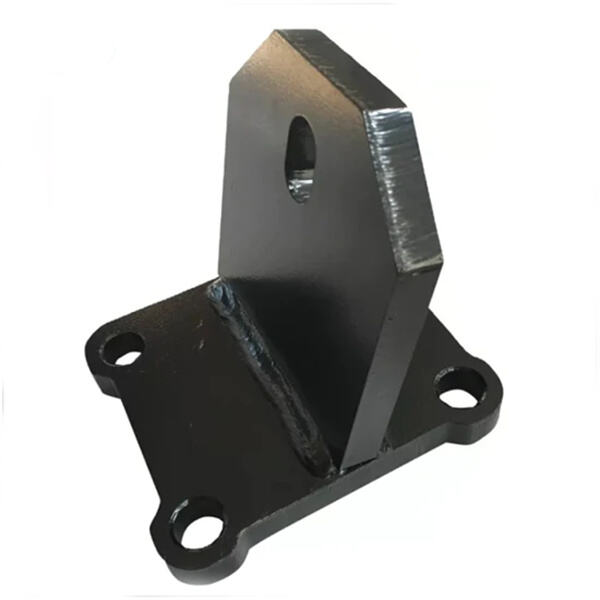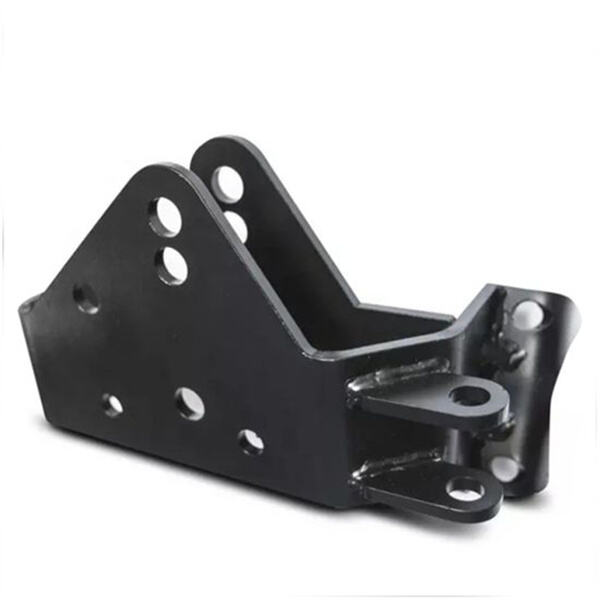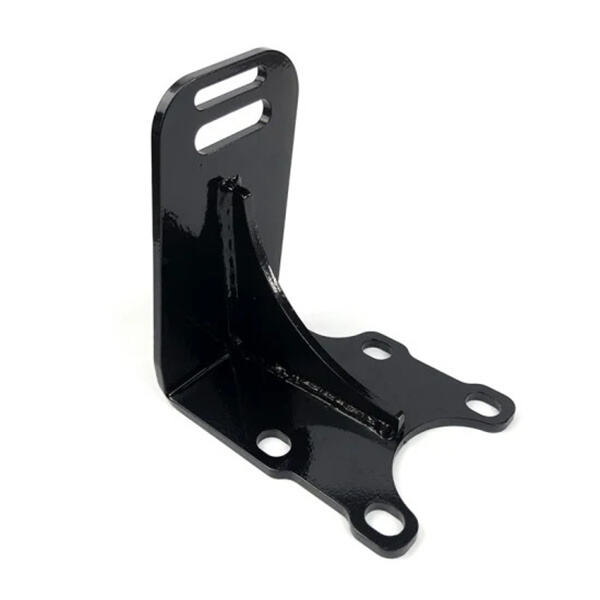Sheet metal is an amazing material but we sometimes take it for granted as part of our daily lives. Sheet metal weaves its way into our lives, from the high rises that outline city skylines to computerized gadgets we depend on. Sheet metal has to be welded together, carefully binding segmented pieces of metals through the process into a unified whole; so that its flat form can become something entirely different and far more complex in appearance than just mere sheetness.
The exciting world of sheet metal fabrication is entering a new era, as technology structure the opportunities to design for you succeeding generations and embrace greener prospects. This is the journey we will be using to go through this metamorphosis, understanding in detail each one of its aspects. Learn the craft behind the methodologies that transform sheet metal into masterpieces of design and infuse new technology to catapult productivity levels We will also touch base on how alternate materials can be used for best performance and explore environmental-friendly sheet metal welding methods.
Any kind of body parts converted into the sheet metal, call it as a form made by several processes. Every stage from the raw material to the final product is showing human creativity and smart engineering. There are many ways of welding such as TIG, MIG and Stick. Each has its own unique abilities which fit with different needs from strength to ease or work etc... Where TIG welding offers detailed precision for small delicate tasks MIG welders are focused on with speed and strength when bonding the heavier materials of metal together. The stick welder, on the other hand, makes up for its inadequacy by working well in unfavourable environments. Its versatility permits several operations on sheet metal beyond welding, including bending, stamping and laser cutting. Sophisticated CNC machines are controlled via the computer that improves upon fabrication thus enhance intricate shapes accuracy.
In the world of sheet metal and welding, automation and robotics increased production rates with savvy technology. It has cut production times - errors and safety in manufacturing facilities. For example, laser welding uses focused beams to produce fast and precise welds - especially helpful for thin materials where heat distortion needs to be kept as low as possible. Today, software easily extends to design and virtual prototyping as well as automated manufacturing enabling rapid prototyping and custom configurations. Further, through AI-powered predictive maintenance, the equipment performance is maximised by minimising breakdowns and improving on uptime as well as quality.
This post covers the number of types, varieties and grades of metals and alloys that are widespread in sheet metal fabrication. It gives us some not unusual fabric alternatives used for those specific applications... A corrosion resistant metal used widely in food processing and architectural cladding applications is Stainless Steel. Lightweight but tough, aluminum is commonly used in aerospace and automotive applications. Copper and brass: prized for their conduction properties, copper used in electrical components and decorative features In order to ensure that a metal is capable of functioning properly for the extended duration, it requires making sure...... READ MORE
Modern manufacturing is built on sustainability, and the sheet metal welding sector has adopted an ecological culture. Operations that maximize the use of material by recovering scrap metal through closed-loop recycling reduce waste and conserve resources. In order to save power energy-efficient equipment are used like inverter based welding machines. The move towards powder and water-based paints instead of solvent based is bringing down levels of volatile organic compounds (VOCs). In addition, modern welding methods such as friction stir welding and less fume extraction systems are green fabrication ways with minimal energy input.
The applications for sheet metal welding are numerous and this makes it one of the most versatile uses among all other industries. Sheet metal is as fundamental a raw material for machine parts and trailers in manufacturing, whilst form the core of the structural framework roofing systems, architectural facades provided by construction fairly. One of the major uses for sheet metal is in automotive manufacturing, where it is used both to create external auto bodies and outer engine parts.... Appliances such as refrigerators and stoves can also benefit from time-tested strength properties provided by Sheet Metal Design on another hand while using this raw material aids accessibility concerning creating only one whole part per click instead item-by-item production. In the medical field, precision-welded stainless steel components are essential to surgical instruments and other types of healthcare equipment. The artistic potential of sheet metal welding is evident even within art; both monumental public installations and detailed sculptures give way to the magical glory behind its construction.
In summary, MIG welding has evolved and is still evolving the way construction works are done in almost all industries globally. Superior craftsmanship, centuries old formed and new industry techniques are merging to probe the endless design opportunities in conjunction with advanced processes. This innovation is a promising future for adopting sustainable process in product design and manufacturing where creativity, innovation merge with green to create masterpieces that fulfill humanity dream to perfect all.
The journey from raw sheet to finished product is a testament to human ingenuity and precision engineering. Techniques such as TIG (Tungsten Inert Gas), MIG (Metal Inert Gas), and Stick welding each offer unique advantages, with TIG providing the finest control for intricate work, MIG ensuring speed and efficiency for thicker materials, and Stick welding excelling in outdoor or less than ideal conditions. Beyond welding, forming techniques like bending, stamping, and laser cutting add another dimension to sheet metal's adaptability. CNC (Computer Numerical Control) machines further refine these processes, enabling the creation of complex geometries with remarkable accuracy.

In the realm of sheet metal and welding, technology has been a game-changer. Automation and robotics have significantly reduced production times, minimized errors, and enhanced safety on the factory floor. Laser welding, for instance, utilizes concentrated beams to achieve incredibly fast and clean welds, particularly beneficial for thin materials where heat distortion must be minimized. Advanced software systems now allow for seamless integration of design, simulation, and production, enabling rapid prototyping and customization. Furthermore, AI-driven predictive maintenance keeps machinery running optimally, preventing downtime and ensuring consistent quality.

Sheet metal spans a vast array of metals and alloys, each tailored to specific applications. Stainless steel, renowned for its corrosion resistance, is a staple in food processing and architectural cladding. Aluminum, lightweight yet strong, finds favor in aerospace and automotive industries. Copper and brass, with their excellent conductivity, are crucial in electrical components and decorative elements. Understanding the properties of these materials—ductility, malleability, and thermal conductivity—is essential in selecting the right metal for the task, ensuring both functionality and durability.

Sustainability has become a core principle in modern manufacturing, and sheet metal welding is no exception. Recycling initiatives play a pivotal role, with many facilities implementing closed-loop systems to recover and reuse scrap metal, reducing waste and conserving resources. The use of energy-efficient equipment, such as inverter-based welding machines, minimizes power consumption. Powder coating and water-based paints are replacing solvent-based alternatives, reducing VOC emissions. Additionally, innovative welding techniques like friction stir welding consume less energy and produce negligible fumes, contributing to a greener fabrication process.
service team comprises pre-sales staff fluent sheet metal and welding business communication, as well engineers adept product processing technology. ensure that technical sales personnel work together facilitate efficient communication also understanding requirements clients. provide customers flexible, personalized processing solutions all one location. deeply understand uniqueness each project, so team put every effort ensure smooth process your work, which results win-win partnership.
sheet metal and welding developing new projects marked our efficient adaptable capabilities. We quick adapt changes design course development. frequent communication clients allows provide specialized view improve drawings speed up process. Leveraging 15 years expertise custom processing metals, we've guided numerous clients create thousands creative products. resultant new products been praised marketplace providing customers edge market. dedication quality guarantees clients receive highest quality solutions empowers them navigate ever-changing market confidence.
system managing orders highly efficient well-designed tool guarantees sheet metal and welding processing every customer's order. order management system permits customers make orders quickly monitor progress real-time. insist precise execution orders. We maintain open dialogue clients throughout process manufacturing swiftly addressing design modifications upgrade requests. matter how large order handle each order a keen eye, ensuring prompt processing superior results. dedication excellence underlines commitment exceeding meeting customer expectations interactions.
sheet metal and welding open transparent services, always seeking long-term business cooperation customers. Integrity cornerstone business relationships. provide expert guidance fair pricing prior closing deals. In course production keep constant contact customers, ensuring they're informed developments. Additionally, are transparent manufacturing process, sharing updates addressing issues swiftly. Customers invited give feedback at time. Thanks transparent open approach, have forged solid long-term relationships increasing numbers customers.
The versatility of sheet metal welding transcends industries, manifesting in a plethora of applications. In construction, it forms the backbone of structural frameworks, roofing systems, and architectural facades. Automotive manufacturing relies heavily on sheet metal for vehicle bodies and engine components. Appliances, from refrigerators to ovens, utilize sheet metal for durability and aesthetics. The medical sector benefits from precision-welded stainless steel parts in surgical instruments and medical equipment. Even in the realm of art, sculptors employ sheet metal welding to create monumental public installations and intricate sculptures, demonstrating the medium's artistic potential.
In conclusion, sheet metal and welding form a dynamic duo, shaping progress across industries and creative pursuits. Through a blend of traditional craftsmanship and cutting-edge technology, these practices continue to evolve, pushing the boundaries of design, enhancing productivity, adopting eco-conscious methodologies, and expanding into ever more diverse applications. As we navigate the future, the fusion of creativity, innovation, and sustainability within the field promises to yield even greater masterpieces, testament to humanity's unyielding quest for perfection.